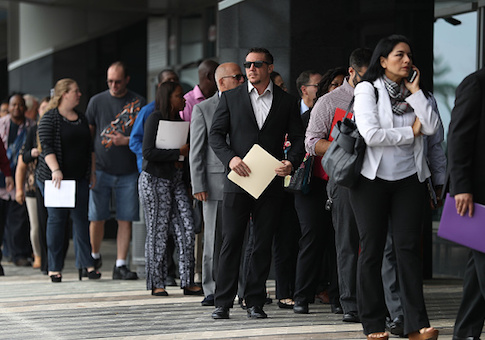The unemployment rate for all Americans remained steady in November at 4.1 percent, which is the lowest level seen in 17 years, according to the latest data from the Bureau of Labor Statistics.
The unemployment rate measures the percent of those who did not have a job and actively looked for one over the month.
The "real" unemployment rate, otherwise known as the U-6 measure, was 8.0 percent in November, which increased slightly from the 7.9 percent seen in October.
There were 148,000 more Americans who joined the labor force in November, while 35,000 Americans left the labor force.
In October, there were 160,381,000 Americans in the civilian labor force, which increased to 160,529,000 in November.
The labor force participation rate, which is the percentage of Americans that has a job or actively looked for one in the past month, remained steady in November at 62.7 percent.
The number of employed Americans increased from 153,861,000 in October to 153,918,000 in November, an increase of 57,000 individuals.
There were slightly more Americans working part-time for economic reasons this past month. There were 4,753,000 Americans working part-time in October who would rather have a full-time job but cited economic reasons for not having such employment. This number increased by 48,000 over the month. Since the beginning of the year, however, the number of Americans working part-time for economic reasons has declined by 1,039,000 individuals.
According to the bureau, involuntary part-time workers are "persons who indicated that they would like to work full time but were working part time (1 to 34 hours) because of an economic reason, such as their hours were cut back or they were unable to find full-time jobs."
"We have never seen this kind of intensity around job creation in the 44-year history of the National Federation of Independent Business Jobs Report," said NFIB president and CEO Juanita Duggan. "This is a powerful signal that small business is roaring back to life and ready to lead another period of economic expansion."
"Small business owners believe that next year will bring opportunities to grow," said NFIB chief economist Bill Dunkelberg. "They feel very good about the new management team in Washington, they expect Congress to reduce their taxes, and their customers are spending more money. All of that leads to higher demand for workers."
"Overall, labor demand is historically very strong, with historically high job openings and record high plans to create new jobs," said Dunkelberg.
